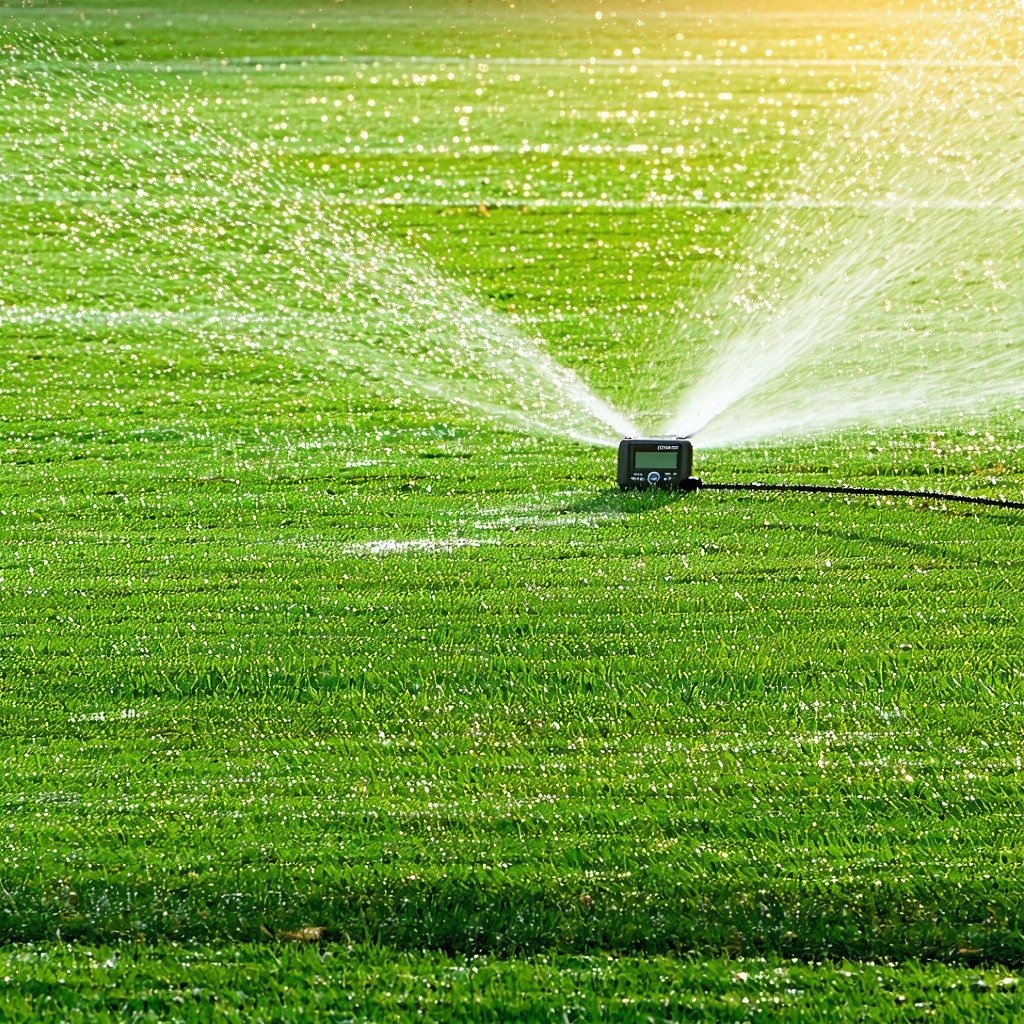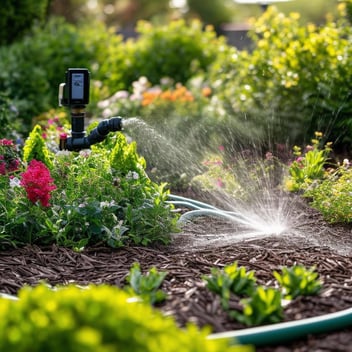Watering Wisdom: Efficient Irrigation Tips for Your Turf Lawn
Achieving a verdant and resilient turf lawn requires more than just regular watering; it demands a strategic approach to irrigation that conserves water while promoting robust grass growth. By implementing efficient watering practices, you can maintain a healthy lawn that thrives in various conditions.
Understanding Your Soil Type
The foundation of effective irrigation lies in comprehending your soil's characteristics. Soils can be sandy, loamy, or clayey, each with distinct water retention and drainage properties. Sandy soils drain quickly, necessitating more frequent watering, whereas clay soils retain moisture longer but are prone to compaction. Loamy soils, a balanced mixture of sand, silt, and clay, offer ideal conditions for turf growth. Conducting a soil test can provide valuable insights into its composition, enabling you to tailor your watering schedule accordingly.
Timing Is Everything: When to Water
Watering during the early morning hours, typically between 4 a.m. and 10 a.m., is optimal for turf health. During this period, cooler temperatures and calmer winds reduce evaporation, allowing water to penetrate the soil effectively. Watering in the evening or at night can lead to prolonged leaf wetness, increasing the risk of fungal diseases.
Deep and Infrequent Watering
Encouraging deep root growth is essential for a drought-resistant lawn. This is best achieved through deep and infrequent watering practices. Applying approximately 0.4 to 0.6 inches of water when the lawn shows signs of wilting promotes deeper root systems, enhancing the turf's ability to access moisture during dry periods. Avoid shallow, frequent watering, as it encourages surface rooting and reduces drought tolerance.
Efficient Irrigation Systems
Investing in an efficient irrigation system can significantly reduce water waste. In-ground sprinkler systems, when properly designed and maintained, deliver uniform coverage and can be programmed to operate during optimal watering times. Regular maintenance, such as checking for leaks and ensuring correct pressure, is crucial for system efficiency.
Incorporating Xeriscaping Principles
Xeriscaping, a landscaping philosophy that emphasizes water conservation, can be integrated into turf management. By selecting drought-tolerant grass species and minimizing turf areas in favor of native plants, you can reduce irrigation demands. This approach not only conserves water but also enhances biodiversity and reduces maintenance requirements.
Monitoring Weather Conditions
Adjusting your watering schedule based on weather conditions is a hallmark of efficient irrigation. During periods of rainfall, suspend irrigation to prevent overwatering and runoff. Conversely, during hot and dry spells, monitor your lawn for signs of drought stress and adjust watering accordingly. Utilizing rain sensors or weather-based irrigation controllers can automate this process, ensuring your lawn receives the appropriate amount of water.
Regular System Audits
Conducting periodic audits of your irrigation system ensures it operates at peak efficiency. Check for clogged nozzles, misaligned sprinklers, and leaks that can lead to water waste. Measuring the output of your sprinklers can help determine if your system delivers water uniformly across the lawn. Making necessary adjustments based on these audits can lead to significant water savings and healthier turf.
Conclusion
Implementing efficient irrigation practices is essential for maintaining a healthy and sustainable turf lawn. By understanding your soil, timing your watering appropriately, adopting deep and infrequent watering strategies, utilizing efficient irrigation systems, incorporating xeriscaping principles, monitoring weather conditions, and performing regular system audits, you can achieve a lush lawn that thrives while conserving precious water resources.




